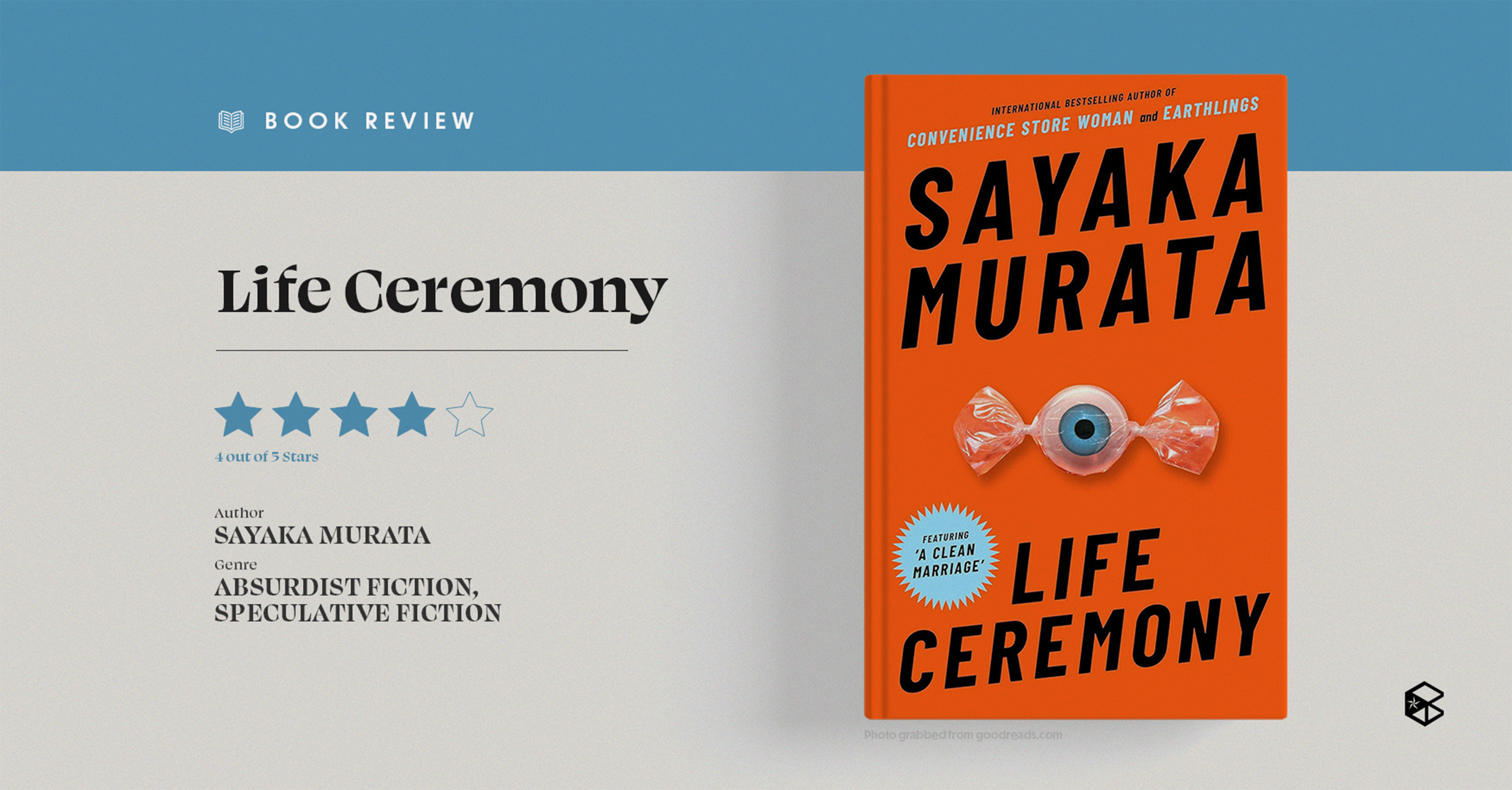Satire, comedy, and gut-punching commentary all rolled into one, Life Ceremony pushes the boundaries of “normalcy” with its 12 tales of people trapped in the eccentricities of their everyday lives. Beyond the bizarreness of these stories, each unique narrative truly leaves the reader either in a state of confusion, melancholy, or even both.
Written by Sayaka Murata—who also authored the controversial book, “Earthlings”—Life Ceremony can be read as an enigma on a surface-level. The feeling of reading it for the first time could be described as dipping your toe in a puddle only to fall in and realize that it is a deep well. As one goes from story to story, it becomes easier to accept the unnatural worlds each of the characters live in—may it be a place where the sun never sets and the inhabitants never dream, or an alternate reality where certain human body parts are made into commodities.
The intersection of the philosophical and fantastical
Beneath the shocking premise of each story lies thought-provoking discourse on a certain aspect of society. Some of these are on the nose, like “A Magnificent Spread.” In this, the focus of the story mainly revolved around the differences in food preferences between the main characters.
The main character’s husband mainly consumed astronaut food—largely because of its marketing—while her sister, Kumi, prefers to cook food from her past life as a warrior—one of the dishes she makes being dandelions marinated in orange juice. Conflict ensues when these characters, alongside Kumi’s husband and in-laws, decide to share a meal together, with each of them insisting that their food choice should be the dominant one. Towards the end, they come to the agreement that they should not be obligated to like the other person’s meal, and that it was okay to eat differently from one another.
This story itself could easily be read as a critique on culture and beliefs. Murata’s way of writing dialogue—as well as the translation—is sharp in delivering its points across. Meanwhile, stories like “A First-Rate Material” leave more room for interpretation.
In this first story of the novel, it was the current trend to make sweaters out of human hair or chandeliers out of fingernails. In fact, it was disrespectful to bury or cremate the dead, seeing as having their bodies turned into objects may allow them to be “honored” more. The main conflict lies between Nana and her husband—with the former having a fondness over this practice, while the latter is repulsed by it. A distinct argument of morality is present throughout the story, showing both sides of the argument equally so that readers may form their own opinions on the matter.
Either way, Murata has the talent of writing particularly biting lines which make the reader stop for a moment and simply try to digest what they have just read.
Vignettes of pure strangeness
Other times, vignettes are mixed in the book alongside the longer stories. These stories end faster before they could even begin. This could be seen in “The Time of the Large Star,” where the main character recently moved to a land where the locals don’t dream nor sleep. There, the main character meets a boy who asks her about her experiences of dreaming. The entire thing ends after their conversation, with things not really picking up after the premise had been established.
Another peculiar story was “Poochie,” which revolved around two schoolgirls who kept a businessman as a pet. There wasn’t much given on his backstory—nor was he given much dialogue. There wasn’t any question as to how this became so as well. The main information given to the readers was that this man was being hunted by someone and that the girls treated him like a dog.
Despite their brevity, and lack of depthness, it was still entertaining to be plunged into these strange worlds, even for a brief period of time.
An inkling of innocence
The vast cast of characters presented throughout the entire book do share a similar characteristic: a certain touch of purity. The way they see things in their world and the way their stories are built up almost have a child-like innocence and wholesomeness to them. Some of them could even be considered as merely slice-of-life tales, like “A Summer Night’s Kiss.” This tale revolves around the friendship between two elderly women—one who was explorative of her sexuality, while the other one has yet to experience her first kiss.
Perhaps it is the book’s blunt tone or the exposition-loaded dialogue—either way, Murata had a way of presenting weirdness as something trivial. There is a certain air of universality when each story is stripped to its basic ideals. No side is ever truly evil or righteous—they simply only exist.
Life Ceremony is definitely bound to take any reader for a wild ride. Attempting to reason with any of the situations presented in the book is but a futile attempt. It is best to let go of the reins and go with whatever the book throws at you.
If you wish to experience the book’s outlandishness firsthand, you may find it at Fully Booked branches nationwide or on Shopee.


